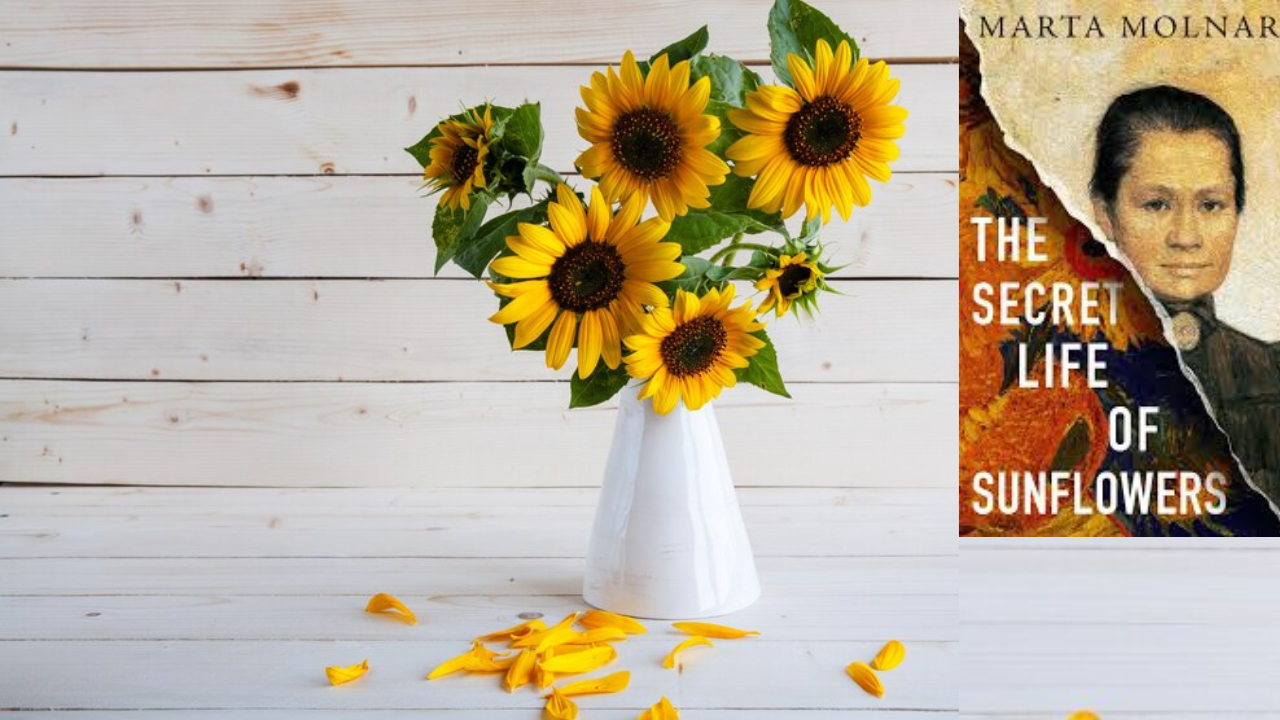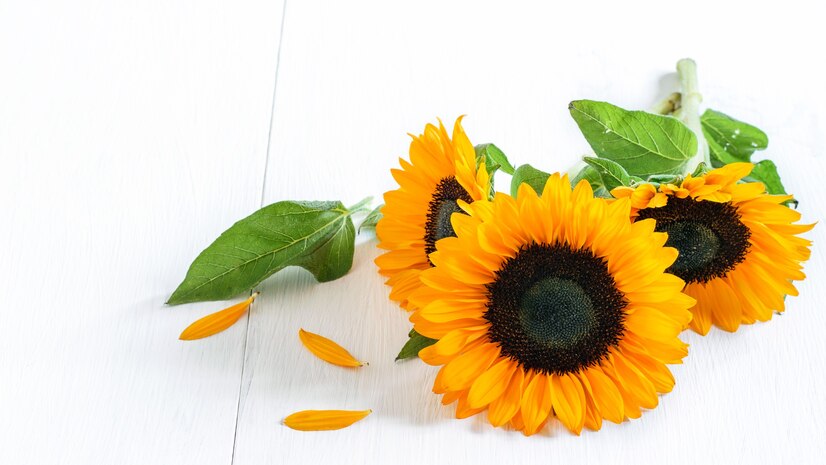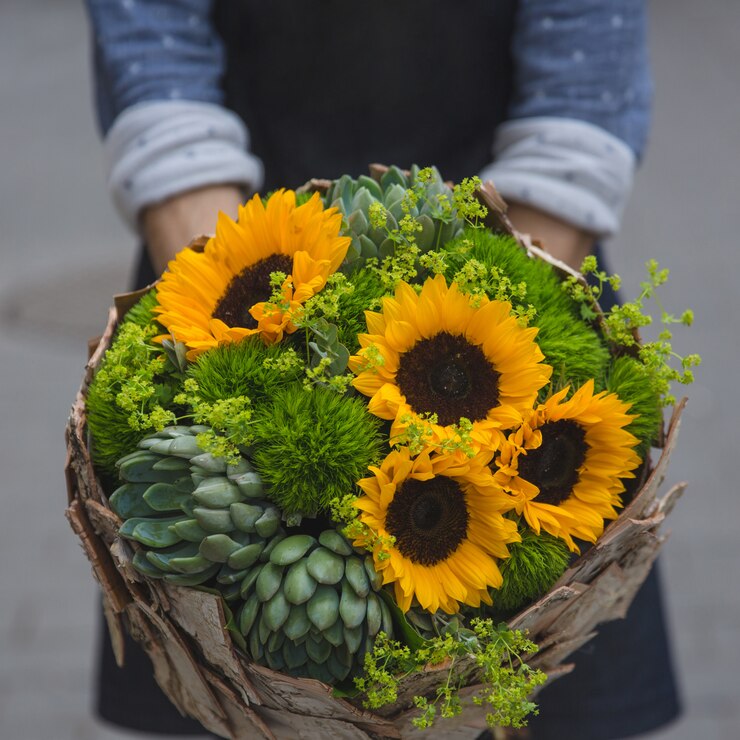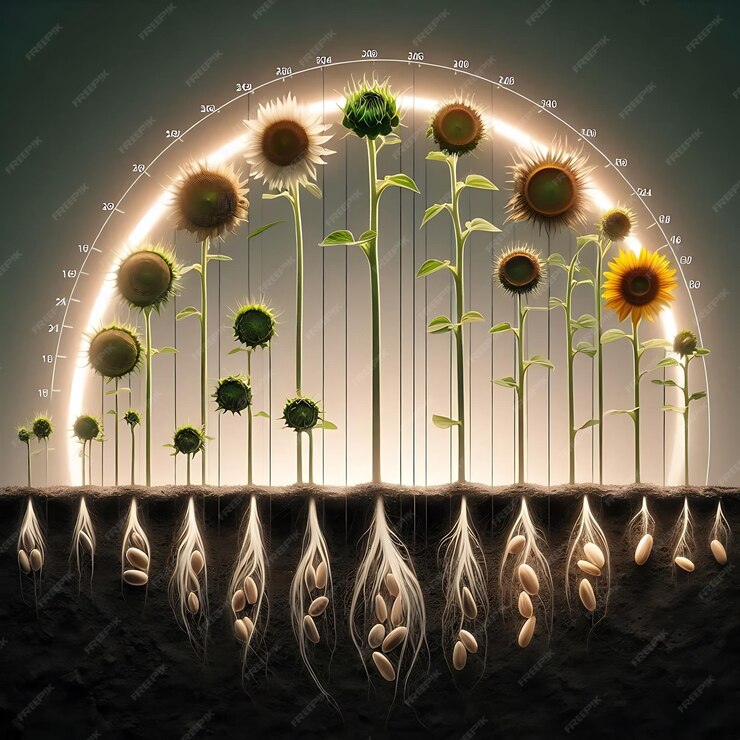Sunflowers are often celebrated for their vibrant beauty, but there is so much more to these towering plants than meets the eye. With their golden petals and towering stalks, sunflowers seem to bask effortlessly in the sun, capturing the imagination of artists, gardeners, and nature lovers alike. However, beneath their sunny appearance lies a world of fascinating secrets that reflect the plant’s complexity, intelligence, and deep connection to the natural environment.
From their mesmerizing ability to follow the sun to their role in ecological balance, the secret life of sunflowers is a remarkable story of adaptation, survival, and surprising beauty. In this article, we’ll explore the hidden truths behind these iconic plants, uncovering everything from their ancient origins to their modern-day ecological importance.
The Ancient Origins of Sunflowers
Sunflowers have been cultivated by humans for thousands of years, but their history goes back even further. These bright blooms are native to North and South America and were first domesticated by indigenous peoples over 4,500 years ago. The sunflower’s resilience and versatility made it an essential crop, providing food, oil, and dye.
Ancient civilizations, including the Aztecs and Incas, revered the sunflower for its symbolism and practical uses. The sunflower’s bright, sun-like appearance made it a natural symbol of the sun god, and it was often used in religious rituals and ceremonies. The seeds were ground into flour, pressed for oil, and even used to make medicines.
In modern times, sunflowers remain a crucial agricultural crop, especially in countries like Russia, Ukraine, and the United States, where they are grown primarily for their oil-rich seeds. Yet, despite their widespread cultivation, few people are aware of the secret life that unfolds within these towering plants.
Heliotropism: The Sun-Chasing Dance of Sunflowers
One of the most fascinating aspects of a sunflower’s life is its ability to track the sun—a phenomenon known as heliotropism. During the early stages of growth, young sunflower plants exhibit this behavior by turning their heads from east to west, following the sun’s movement across the sky.
This movement is not just for show. Heliotropism plays an essential role in the sunflower’s development. By keeping their faces toward the sun, sunflowers maximize the amount of sunlight they absorb, which boosts photosynthesis and accelerates growth. This sun-following behavior is controlled by the sunflower’s internal biological clock, which regulates the plant’s movements based on light exposure.
Interestingly, once a the secret life of sunflowers reaches maturity, this sun-chasing behavior stops. Mature sunflowers tend to remain facing east, which helps warm the flower heads more quickly in the morning. This positioning benefits pollinators, such as bees, by providing a warm surface to land on as they collect nectar.
Sunflowers and Symmetry
While the striking height and bold colors of sunflowers capture the attention of many, a closer look reveals something even more remarkable: the spiral pattern of seeds at the center of the flower. This pattern follows the mathematical principles of the Fibonacci sequence, a natural phenomenon in which each number in the sequence is the sum of the two preceding numbers (1, 1, 2, 3, 5, 8, and so on).
In the case of sunflowers, the Fibonacci sequence manifests in the arrangement of seeds in the flower’s disk, creating an intricate spiral design. This arrangement isn’t just aesthetically pleasing; it is also highly efficient. The Fibonacci spirals ensure that each seed has optimal space to grow, minimizing wasted space and maximizing seed production.
This remarkable display of nature’s mathematical precision has long intrigued scientists, mathematicians, and artists alike. The the secret life of sunflowers spiraling seeds provide a stunning example of how nature uses mathematical principles to achieve efficiency and balance.
The Ecological Role of Sunflowers
Beyond their beauty and symbolic significance, sunflowers play a crucial role in supporting biodiversity. As a key source of nectar and pollen, sunflowers attract a wide variety of pollinators, including bees, butterflies, and birds. By supporting these pollinators, sunflowers contribute to the health of ecosystems, helping plants reproduce and maintain ecological balance.
In addition to their role in pollination, sunflowers are also know for their ability to phytoremediate contaminat soils. Phytoremediation is a process in which plants absorb pollutants, such as heavy metals, from the soil and store them in their tissues. Sunflowers have been used in environmental cleanup efforts following nuclear disasters like Chernobyl and Fukushima. Their ability to remove toxins from the ground demonstrates the plant’s resilience and adaptability in challenging environments.
Moreover, sunflower seeds serve as a vital food source for wildlife, particularly during the fall and winter months when other food sources are scarce. Birds, squirrels, and small mammals rely on the protein-rich seeds to survive the colder seasons, further cementing the sunflower’s importance in sustaining local wildlife populations.
The Cultural Symbolism of Sunflowers
Sunflowers have captured the human imagination for centuries, symbolizing a wide range of ideas and emotions. Their bright, sun-like appearance naturally associates them with warmth, happiness, and positivity. In many cultures, sunflowers are seen as symbols of loyalty, adoration, and longevity. ancient times, the sunflower was associat with the sun god and was use in religious rituals to symbolize strength and vitality. In modern times, the sunflower has become a symbol of hope and resilience, particularly in movements advocating for environmental sustainability and ecological protection.
Perhaps one of the most famous representations of the secret life of sunflowers in art comes from the Dutch painter Vincent van Gogh. His iconic series of sunflower paintings captures both the beauty and vibrancy of these flowers, as well as their deep connection to the human spirit. Van Gogh once wrote to his brother Theo, explaining that the sunflower represented “gratitude.” This emotional depth and symbolism have made sunflowers a popular subject in art, literature, and popular culture.
The Life Cycle of a Sunflower: From Seed to Bloom
The secret life of sunflowers begins long before their tall stalks and golden blooms make an appearance. Like all plants, sunflowers go through a detailed life cycle that begins with a tiny seed. The life cycle of a sunflower can be breakk down into several stages:
- Germination: After the sunflower seed is plant, it requires water and warmth to sprout. Within a few days, the seed begins to germinate, sending out a small root and shoot.
- Seedling Stage: The young sunflower develops its first true leaves, which allow it to begin photosynthesis. During this stage, the sunflower grows rapidly, thanks to its heliotropic behavior, which ensures it receives maximum sunlight.
- Vegetative Growth: Over the next few weeks, the sunflower’s stem grows taller, and more leaves develop. This stage is critical for the plant’s overall height and strength.
- Flowering Stage: After several weeks of growth, the sunflower reaches maturity and begins to produce flower buds. As the flower opens, it reveals the iconic yellow petals and disk filled with seeds.
- Pollination and Seed Production: The sunflower relies on pollinators to transfer pollen between flowers, ensuring that seeds are produce. Once pollination occurs, the seeds within the flower head begin to mature.
- Harvest: At the end of the sunflower’s life cycle, the seeds can be harvest for food, oil, or replanting. Alternatively, they provide nourishment to wildlife during the colder months.
Sunflowers as a Source of Food and Medicine
Sunflowers are not just beautiful to look at; they are also incredibly useful. Sunflower seeds are a rich source of nutrients, including healthy fats, protein, and vitamins. They are use in cooking, snacking, and baking, providing a healthy and delicious food source.
Sunflower oil, extract from the seeds, is widely use for cooking and in cosmetic products due to its light texture and health benefits. Rich in vitamin E and antioxidants, sunflower oil promotes skin health, reduces inflammation, and improves heart health.
In traditional medicine, sunflowers have been use to treat a variety of ailments. Native American tribes use sunflower leaves and petals to create remedies for respiratory issues, while sunflower oil was use to heal wounds and promote overall well-being.
FAQs
What is the purpose of heliotropism in sunflowers?
Heliotropism helps young sunflowers absorb as much sunlight as possible, maximizing photosynthesis and promoting healthy growth.
Why do mature sunflowers face east?
Mature sunflowers face east to warm up faster in the morning, which benefits pollinators like bees by providing a warm surface to land on.
Are sunflowers good for the environment?
Yes, sunflowers play an essential role in pollination, support wildlife, and help clean contaminated soils through phytoremediation.
Can sunflowers remove toxins from the soil?
Yes, sunflowers are know for their ability to absorb heavy metals and other toxins from contaminat soil, a process know as phytoremediation.
What is the significance of the Fibonacci sequence in sunflowers?
The Fibonacci sequence governs the arrangement of seeds in a sunflower’s disk, ensuring that each seed has enough space to grow and maximizing seed production.
Are sunflower seeds healthy?
Yes, sunflower seeds are a nutritious snack rich in healthy fats, protein, vitamins, and minerals, making them a great addition to a balanced diet



















